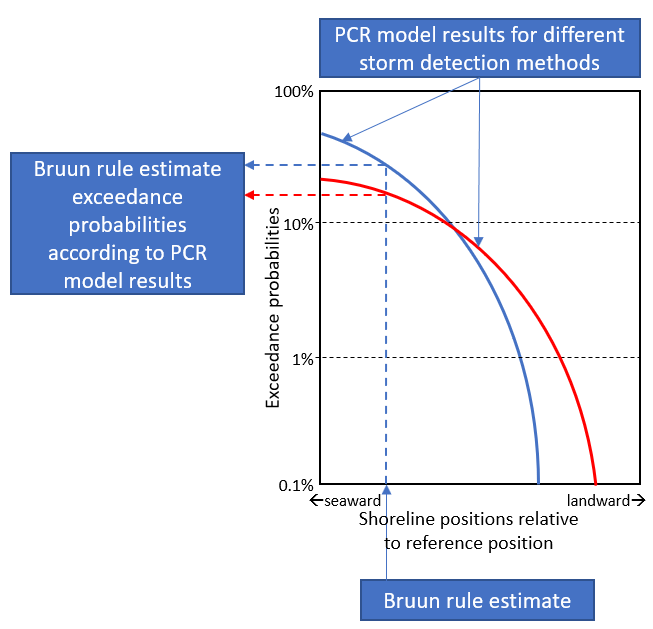S.A.W. de Roover1,2*, A. Dastgheib3, J.J. Warmink1, R. Ranasinghe3
1University of Twente, This email address is being protected from spambots. You need JavaScript enabled to view it.; This email address is being protected from spambots. You need JavaScript enabled to view it.; 2HydroLogic; 3IHE-Delft, This email address is being protected from spambots. You need JavaScript enabled to view it.; This email address is being protected from spambots. You need JavaScript enabled to view it.
Introduction
In Japan, projections of future beach erosion (up to 2100) have been estimated using the Bruun rule3. However, Bruun rule-derived coastline projections4 are difficult to use in coastal hazard risk assessment, because they are deterministic and uncertainty from storms is not included5,6.
The research goal was to quantify uncertainty related to sea level rise and storm definition in the Bruun rule-derived future shoreline positions in Japan, by comparing these projections with the results of Probabilistic Coastal Recession (PCR) models7.
Methods
Three sites in Japan were considered for this research. These were sandy beaches with (almost) no hard structures. Four different sea level rise (SLR) scenarios8 were used in the setups of PCR models. Empirical cumulative distribution functions (ECDFs) describing coastal recession exceedance probabilities were produced with the PCR model results. Two ECDFs were made per data set based on annual maximum landward shoreline positions (Rmax) and shoreline positions derived from 5-year trend lines (Rtrend). Exceedance probabilities for Bruun estimates were derived with these ECDFs (Figure 1).
Results
For 2100 and the most severe SLR scenario, the exceedance probabilities derived with the ECDFs for Rmax for Bruun rule estimates were: 49% and 44% with the two PCR models for site 1; 18% and 77% with the two PCR models for site 2; and 43% with the single PCR model for site 3.

Figure 1. Explanation of the comparison of Bruun rule estimates with PCR model results. The example shown are hypothetical results of a PCR model and Bruun rule calculation for one site for one SLR scenario for one particular year.
3 Udo, K., & Takeda, Y. (2017). Projections of Future Beach Loss in Japan Due to Sea-Level Rise and Uncertainties in Projected Beach Loss. Coastal Engineering Journal.
4 Bruun, P. (1962). Sea-Level Rise as a Cause of Shore Erosion. Journal of the Waterways and Harbors Division, 88(1), 117–132.
5 Cooper, J. A. G., & Pilkey, O. H. (2004). Sea-level rise and shoreline retreat: Time to abandon the Bruun Rule. Global and Planetary Change.
6 Ranasinghe, R., & Stive, M. J. F. (2009). Rising seas and retreating coastlines. Climatic Change, 97, 465–468.
7 Ranasinghe, R., Callaghan, D. P., & Stive, M. J. F. (2012). Estimating coastal recession due to sea level rise: Beyond the Bruun rule. Climatic Change.
8 IPCC. (2013). “Climate change 2013: The physical science basis,” Contribution of Working Group I to the Fifth Assessment Report of the Intergovernmental Panel on Climate Change. (T. F. Stocker, et.al., Eds.). Cambridge, United Kingdom and New York, NY, USA: Cambridge University Press.










